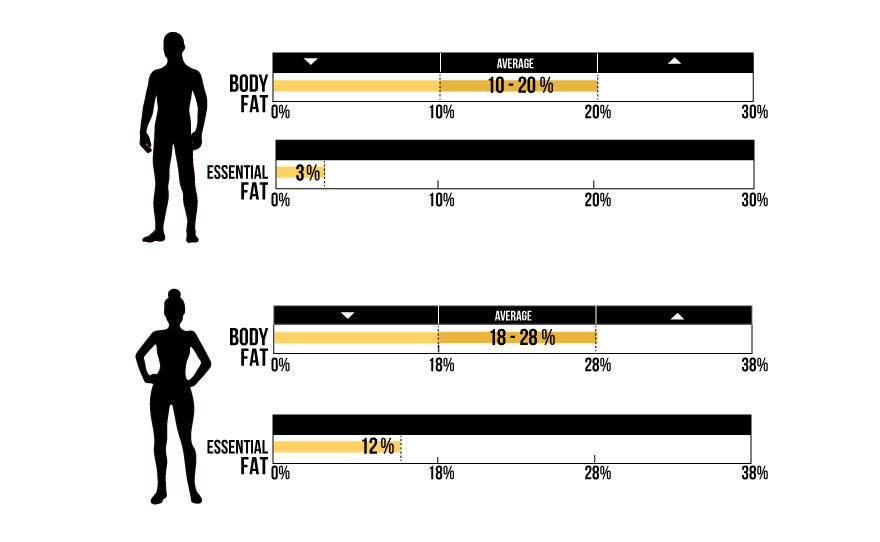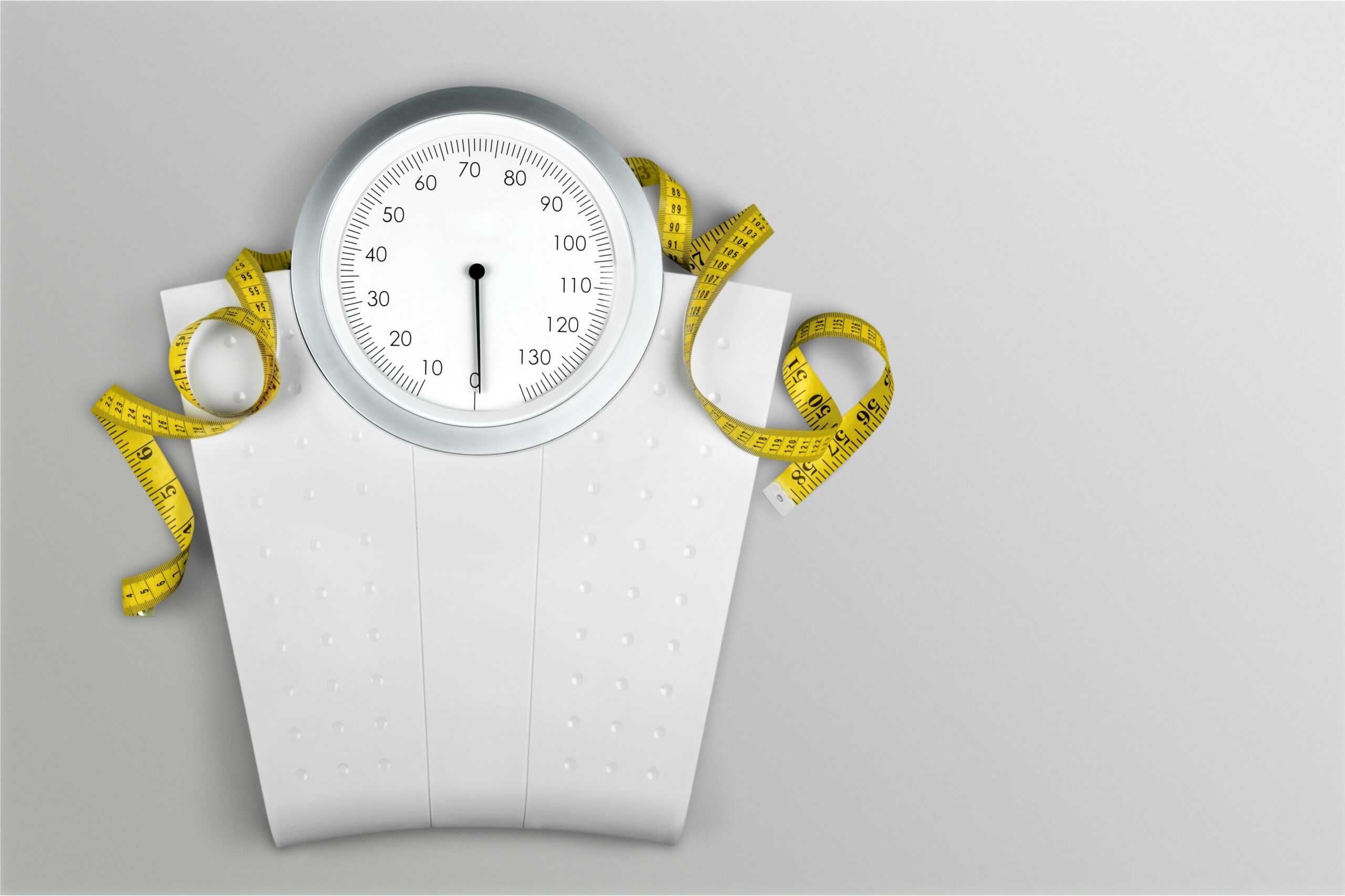“This article originally appeared on InBody USA and is reposted here with permission.”
Editor’s Note: This post was updated on August 1, 2020, for accuracy and comprehensiveness. It was originally published on December 8, 2016
The mere mention of body fat conjures images of belly fat, love handles, and extra junk in the trunk.
This is why you’ll find thousands of articles with exercise tips or diet secrets that promise to lower your body fat percentage, and get rid of x amount of body fat in x days.
But what if it’s not that simple? What if there’s more to body fat than just burning it?
Body fat is something everyone has an opinion on but is not always clearly understood. Some people reason that it’s just a natural part of getting older, and as long as their BMI is in a good range you don’t have much to worry about. Your body does require some body fat to function, but it also requires you to keep your body fat percentage in a certain range for optimal health.
Let’s learn what is body fat, how it affects your health, and how you can maintain a healthy body fat percentage.
What is Body Fat?
It seems like an obvious question: what is body fat? You’re probably thinking that it’s “the fat you can see and point at.” Yes, that’s true – but that’s only half the picture.
Body fat, formally known as adipose tissue, can be broken down into smaller components, and to have a better understanding of how to manage your body fat, you first need to know how to talk about it.
Essential Fat vs Storage Fat
First off, there’s essential fat. It plays a significant role in your overall health and as its name implies, it is essential for survival. That is why a goal of 1 percent of body fat is neither realistic nor healthy.
Essential fat is present in organs, bone marrow, nerve cells, and the brain, and helps you:
- Maintain sufficient energy reserves by acting as a metabolic fuel
- Conserve body heat by acting as an insulator
- Protect your internal organs and joints by acting as a soft, fluffy cushion
- Reproduce; adipose tissue (fat cells) and fertility are heavily linked to each other
Normal essential fat values are pegged at 3 percent and 8 to 12 percent for men and women, respectively. The higher ranges in women account for female-specific adipose tissue needs due to childbearing and similar reproductive functions.
Meanwhile, nonessential or storage fat is adipose tissue that accumulates as energy reserves. Storage fat affects body shape and appearance.
What should your body fat percentage be?
You’re probably wondering what the ideal body fat percentage is for men and women.
While there is no universally agreed on standard for ideal body fat percentage values, a few respected organizations have their own recommended ranges.
 Healthy body fat range for men
Healthy body fat range for men
For goal-setting, the healthy body fat percentage for men is between 10-20 percent.
These ranges are slightly less forgiving than those set by the American College of Sports Medicine (ACSM)—which acknowledges a range of 10-22 percent for men—because they’re centered around an average body fat percentage of 15 percent.
The American Council on Exercise (ACE) has even more lenient ranges, with an average body fat percentage of 21 percent for men.
Healthy body fat range for women
It is recommended that women have a body fat range of 18-28 percent for goal-setting.
The ACSM range is once again more forgiving, with a recommended body fat percentage of 20-32 percent for women.
The ACE range is also more accommodating, with an average body fat percentage of 28 percent for women.
If you’re figuring out the right body composition goal specific to you, these ranges are excellent starting points.
Different Types of Fat
Storage fat can be further divided into two: subcutaneous fat and visceral fat.
Although they’re both components of storage fat, they’re quite different from each other. So different in fact, that these two types of adipose tissue have different gene expressions. This means they are literally different and function independently from each other.
What is Subcutaneous Fat?
Located just underneath the skin, subcutaneous fat is adipose tissue that you can see, touch, and pinch. Subcutaneous fat is the type of body fat that most people think of when they hear the word “fat” because it is tangible.
While too much subcutaneous fat can pose a variety of health risks, visceral fat, the second type of storage fat, has far greater potential to be more harmful.
What is Visceral Fat?
Visceral fat is a type of body fat that surrounds your organs in your abdominal cavity.
These fat cells are hidden between your abdominal organs and can often be overlooked when you use BMI to assess health or body density measurements. However, health professionals recognize visceral fat as a far more dangerous health threat than subcutaneous fat, and it’s considered a strong, independent predictor of all-cause mortality in men and women.
And then there’s metabolic obesity.
This condition occurs when individuals have too much visceral fat (regardless of whether you’re lean or obese), increasing their risk of developing conditions like cardiovascular disease.
The mechanism behind visceral fat’s role as a health threat is largely because visceral fat is a Secretory Organ
Visceral fat used to be thought of as an inert (inactive) fat cells. However, it turns out that it’s a secretory (active) organ, capable of pumping out proteins just like your liver does, or your pancreas.
Again: visceral fat is regular like regular fat cells. It’s active, and it contributes to poor health.
The proteins visceral fat produces are called cytokines, and they’re one of the “foot soldiers” of your immune system. Excess visceral fat pumps out much more of these cytokines than you need. Just like you wouldn’t want soldiers constantly patrolling your neighborhood, you don’t want more cytokines in your body triggering inflammation and putting unnecessary stress on your healthy organs.
While cytokines are normally helpful proteins, too much can potentially increase your risk of diabetes mellitus, hypertension, and atherosclerosis—conditions that characterize metabolic syndrome.
Where is Visceral Fat Located?
Visceral fat’s location near the portal vein (the vein that blood from the stomach, pancreas, and spleen uses to travel to the liver) triggers the release of inflammatory cytokines that can potentially find their way to the liver too.
As a result, these stealthy cytokines will influence lipid production in the liver and cause insulin resistance and steatosis (fatty liver).
Insulin plays a critical role in regulating blood sugar. Insulin resistance increases the risk of developing prediabetes, which means your blood sugar levels are higher than normal and may lead to type 2 diabetes.

What causes too much visceral fat?
Genetics may influence how you store fat in the body. Hereditary influences aside, the following are a few factors have been shown to increase your likelihood of increasing visceral fat accumulation:
- Excessive alcohol consumption
- Sleep deprivation
- Inadequate aerobic (cardio) activity. This systematic review of previous studies on the subject found out that aerobic training of moderate or high intensity has the highest potential to reduce visceral fat among overweight individuals.
How Do You Calculate Body Fat?
There are several ways to measure body fat percentage, and each method has its advantages and disadvantages.
The skin fold test via fat calipers was once considered the standard in measuring body fat. However, the usefulness of skinfold calipers has been called into question because, among other concerns, they only account for or report subcutaneous adipose tissue.
Currently, “gold standard” methods include Dual Energy X-ray Absorptiometry (commonly known as DEXA) and hydrostatic weighing.
A DEXA scan entails a highly-trained specialist directing two low-energy X-ray beams toward the subject’s bones. This method is very accurate in terms of calculating body fat percentage, but it’s extremely impractical, expensive, and not easily repeatable.
Hydrostatic weighing involves a subject being lowered into a water tank until they are completely submerged, at which point they must expel all the air from their lungs and are then weighed. While accurate, this method is highly impractical, very expensive, and uncomfortable.
Another method of body fat measurement that’s rapidly evolving and gaining popularity is bioelectrical impedance analysis (BIA). BIA measures impedance by applying alternating low-level electrical currents through the water in the body.
Though some BIA models in the past had questionable accuracy, the technology has advanced to the extent that the most cutting-edge devices offer accuracy on par with gold standard methods like DEXA but superior affordability, convenience, and repeatability.
How You Gain Body Fat
So how do you gain and store body fat?
First off, let’s take a closer look at the evolutionary origins of obesity.
In The Scientific American, psychologist and science writer Jesse Bering described how storing fat helped our ancestors survive food shortages. However, it wasn’t until the Industrial age (which led to the industrialization of the food industry too) where societies or environments that tend to promote obesity began to take shape.
With no food shortages to worry about and an increasingly sedentary lifestyle, fat stored by the body isn’t put into good use anymore. In short, excess fat just kept on piling up.
This detailed look on the origins of obesity also supports the idea that storing too much body fat and obesity is not primarily the result of one’s “internal biology” but rather how you respond to your “external environment,” which in many parts of the modern world, is characterized by an abundance of convenience and little need for exercise.

Put simply: How hard is it to find high-calorie foods? How much exercise is required to acquire it? On the other hand, how many of us have chronic stress from the hustle and bustle of daily life? Your response to the convenience as well as the stresses of the modern world has an enormous impact on your risk of gaining excess body fat and obesity. No wonder there are more overweight and obese people than ever before.
Fortunately, you still have some control over how you respond by making choices regarding your diet and lifestyle.
What if you have a “slow” metabolism?
It’s a common assumption that overweight individuals supposedly have a “slow” metabolism and increase their body fat percentage quickly. While there is indeed a connection between metabolism and body composition, you don’t necessarily carry a higher body fat percentage because you’re a slow burner.
As mentioned earlier, genetic influences may be at play in how your body stores fat, yet it’s the caloric imbalance over time that’s often responsible for your body weight gain.
Overall, your metabolism doesn’t slow down because you’re getting older and have consumed more fatty food in your life. Rather, it’s largely due to two things that tend to happen as you age, but not because of it—a loss of muscle mass and a tendency towards a sedentary lifestyle.
This is good news for you if you are overweight, because unlike the aging process—which is irreversible—you do have some control over both your muscle loss and your lifestyle habits.

Remember how as a kid, you spent a lot of time running around at school? Walking from class to class or from home to a friend’s house (or anywhere before you could drive, for that matter) – when you’re younger, you were always moving, always getting exercise.
Fast forward to today, you’re now the Employee of the Year who rarely gets out of the office chair, drives to/from work, goes home and sits some more, but you’re still eating like you’re in your teens and twenties. You get the picture: You move less, but your nutrition and portion control have not improved. The perfect formula for caloric imbalance.
Combine this with muscle mass loss due to inactivity, which lowers your metabolism, and you’re on a surefire path for weight gain as you age – but because of your lifestyle, not your age.
How to lower your body fat percentage?
So how do you battle the extra bulge and lower your body fat percentage?
This is one of those things in life where you’re already aware of the (sometimes painful) truth, but your mind still wants to believe in a comforting lie, like blaming your weight gain on a slow metabolism.
Eat less. Move more. No crazy crash diets, no insane exercises, and no “weird tricks.” In theory, it sounds simple.
But we can all agree that it’s not as simple as it sounds.
Nevertheless, you have to take it one (actionable) step after the other if you want to improve your health and become a better version of yourself.
- What it Means to Eat Less
While calorie counting may have its own set of controversies, evidence supports that generally speaking, aiming to be in a caloric deficit simply works.
It’s the basis of nearly every responsible and effective fat loss diet plan.
However, eating less (get ready, this is important) doesn’t mean starving yourself and forgetting about nutrition.
Simply axing hundreds of calories out of your diet all at once, without considering what you’re cutting and why will make eating less extremely difficult to maintain in the long run. Being more mindful of the quality of calories and macronutrients that you eat is absolutely essential.
- What It Means to Move More
Abs are supposedly made in the kitchen, right?
This phrase is meant to educate people that they can work out as much as they want, but without proper nutrition, much of the hard work to lower their body fat percentage will go to waste. There’s a lot of research that backs this up.
A meta-analysis of the relationship between fat mass and physical activity on children concluded that being active alone doesn’t necessarily result in weight loss and a lower body fat percentage. Another study concluded the same thing among adults. So should you ditch your gym membership and hang out more in the kitchen instead?
Not so fast.
Exercise has a ton of benefits in addition to preventing fat gain.
For starters, it helps you sleep better. And as mentioned earlier, getting quality sleep regularly is linked to reduced visceral fat levels. Healthy habits often work together like that.

Furthermore, another meta-analysis of diet and training programs for weight loss found that combining diet and physical activity is more effective for weight loss over 12 months than interventions based on diet or physical activity alone.
And if you want to do something specific to fight visceral fat, the findings of this study suggest that physical activity is more likely to work against visceral fat if you favor cardio (aerobic) over other forms of exercise. This systematic review of the subject shares the same findings.
So Are You Really Losing Fat?
How do you know that you’re on the right track to lower your body fat percentage?
Monitoring the scale? Not really.
Changes in body weight aren’t exactly an accurate reflection of your progress. A pound of fat weighs the same as a pound of muscle or water in your body.
Take a body composition analysis to figure out your lean body mass and fat mass. Just make sure that it distinguishes fat mass between visceral fat and subcutaneous fat. The device may even tell you your Basal Metabolic Rate, a key number to learning your metabolism.
The Bottom Line
There’s a lot to know about body fat. The interplay between caloric imbalance, nutrition, metabolism, exercise regimens…it’s enough to make anyone’s head spin. Plus, once you factor in the role of genetics and environment on obesity, losing body fat can seem like an overwhelming challenge that you’re powerless to achieve on your own.
That shouldn’t be the message you take away here. Knowledge is power, but it shouldn’t over-complicate the challenge at hand. The reality is, for the vast majority of people, fat loss and maintaining a healthy body fat percentage. is something you can have a significant degree of control over. Find a diet and exercise regimen that helps you control their levels and fits your current lifestyle.
It’s true, the battle against body fat goes beyond the fat that you can see, what a scale can measure, or something like BMI can tell you. Surface level skin fat only tells half the story of risks associated with excess body fat. If you rely on appearances only, you may be putting yourself unknowingly at risk. Visceral fat can be lurking inside of you, wreaking havoc on your body.
Ultimately, taking a body composition test that will accurately measure body fat percentage and visceral fat is a good start. It will make you more confident that you’re heading towards the right direction, and not just blindly following programs that promise you’ll lose x amount of body fat in x days.
***
Kyjean Tomboc is a nurse turned freelance healthcare copywriter and UX researcher. After experimenting with going paleo and vegetarian, she realized that it all boils down to eating real food.






